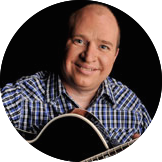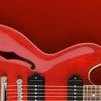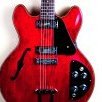Search the Community
Showing results for tags 'humidifer'.
-
I thought I'd take the time to write about the whole house humidifier I use, the AIRCARE Mini-Console Evaporative Humidifier, Model D46720(CN). Winters in North Central Florida can be quite challenging when it comes to controlling humidity. Each cold front that comes through drops the temperature and every following day the temperature rises until the next front comes through. As a result the amount of moisture in the air can change dramatically over the course of 24 hours as the temperature can potentially plummet by 60ºF. One can't tell from a hygrometer how much the amount of moisture has been changed by the passage of a cold front but the Rule of Thumb I use is for each 20º change in temperature the amount of moisture in the air at a given Relative Humidity changes by a factor of 2. Problems arise when the cold air outside with low moisture content enters one's home and is warmed up. Take for instance, it is dawn, the temperature outside is 30ºF, and the Relative Humidity is 100%. Now bring that air inside warm it up to 70ºF and the Relative Humidity drops to 25%. Since wood responds to changes in Relative Humidity by changing its dimensions if one wants to prevent one's guitar (or furniture for that matter) from tearing itself apart some sort of humidity control is essential. Anyway … a little over a year ago with Winter approaching I went to check on the evaporative humidifier I had been using only to find that the fan motor had seized. With tears in my eyes I loaded shovels, and rakes and implements of destruction into the back of a red VW Microbus … oops sorry somehow I got off track and started singing a verse from Arlo Guthrie's "Alice's Restaurant." I headed to Wal-Mart where I'd purchased the unit only to find they had dehumidifiers but no humidifiers. With Winter coming I thought that odd as now would be the time to have stock on hand. So back to the car and I headed to the next nearest store, Lowe's Home Improvement, only to find the same situation, plenty of dehumidifiers to chose from but not a single humidifier. Ok, no problem, Home Depot wasn't far, but upon arriving I found the same story … so home I went and began an online search. In the end I decided on the unit cited above and ordered it from Home Depot for in store pickup. This particular unit has two water tanks (one on each side) that dismount for filling and a wick that draws water up where fan forced air can evaporate it and blow the moisture enriched air out into the room. Further distribution throughout one's home would be done by the circulation of the central unit during a heating cycle. With only the fan and control electronics drawing electricity it is an economical unit to run. Each tank holds a gallon of water and together that is sufficient for 24 hours of continuous operation. The unit's humidistat can be set in increments of 5% Relative Humidity across a range of 25 to 60%. The fan can be turned off and has settings for four different speeds, the two slowest speeds are barely noticeable. The wick is disposable and appears to be good for somewhat more than a single Winter of use as by evaporating the water leaves behind dissolved solids which eventually clog the filter and reduces its ability to function as a wick. I have the unit placed in the largest space I have which conveniently also has the return air duct for the central unit. With hygrometers placed around the house I can tell that the Relative Humidity throughout the house falls within a range of 5%. This unit is rated for 1250 square feet, assuming a ceiling height of 8 feet that works out to a volume of 10,000 cubic feet. Today I found the unit flashing "F" (fill me) on its display and as a result the Relative Humidity had gotten down to 35%. After refilling both tanks it was only a few hours of operation before the unit shut itself down indicating a Relative Humidity of 50%, and turned itself back on when the heater kicked on distributing the moist air to the rest of my home. As much as I like keeping my (all too numerous) guitars happy humidity-wise even more to my liking is that the house is so much more comfortable and consequently I can save a little coin and still feel warm with a lower thermostat setting. As a rough estimate I would hazard to guess that between the annual cost of filter replacement and electricity to operate the annual cost to make use of this unit is about as much as two sets of strings
-
Hey Greg, Just wondering what you recommend as far as keeping your acoustic humidified in the winter time? I once lived in Florida and had no problems, but now I live in a cold northern city, in a loft in a old building. The humidity gets pretty brutal here in the winter. I have a humidifier built in to the HVAC system that I run all the time, and at the opposite end of the place I have a "whole house" humidifier running most of the time too. I keep my J-45 in its hard case when not in use, and inside the case I have two Oasis humidifiers, one for inside the soundhole and one of the case-mounted ones. I keep these full with distilled water, per the instructions. (I used to use the d'addario packets, but I found that in this climate they wear out too fast to be economical) Most of the time my case humidity hovers around 35%, and in the rest of the house with both humidifiers running, about 30%. So, I just wondered: -What level of humidity does it take to damage an acoustic? How long would it need to be exposed to be damaged? -What are the first signs you typically see on a dry guitar that we should take as a warning? -Are there any specific products you recommend to manage humidity? Thanks!






